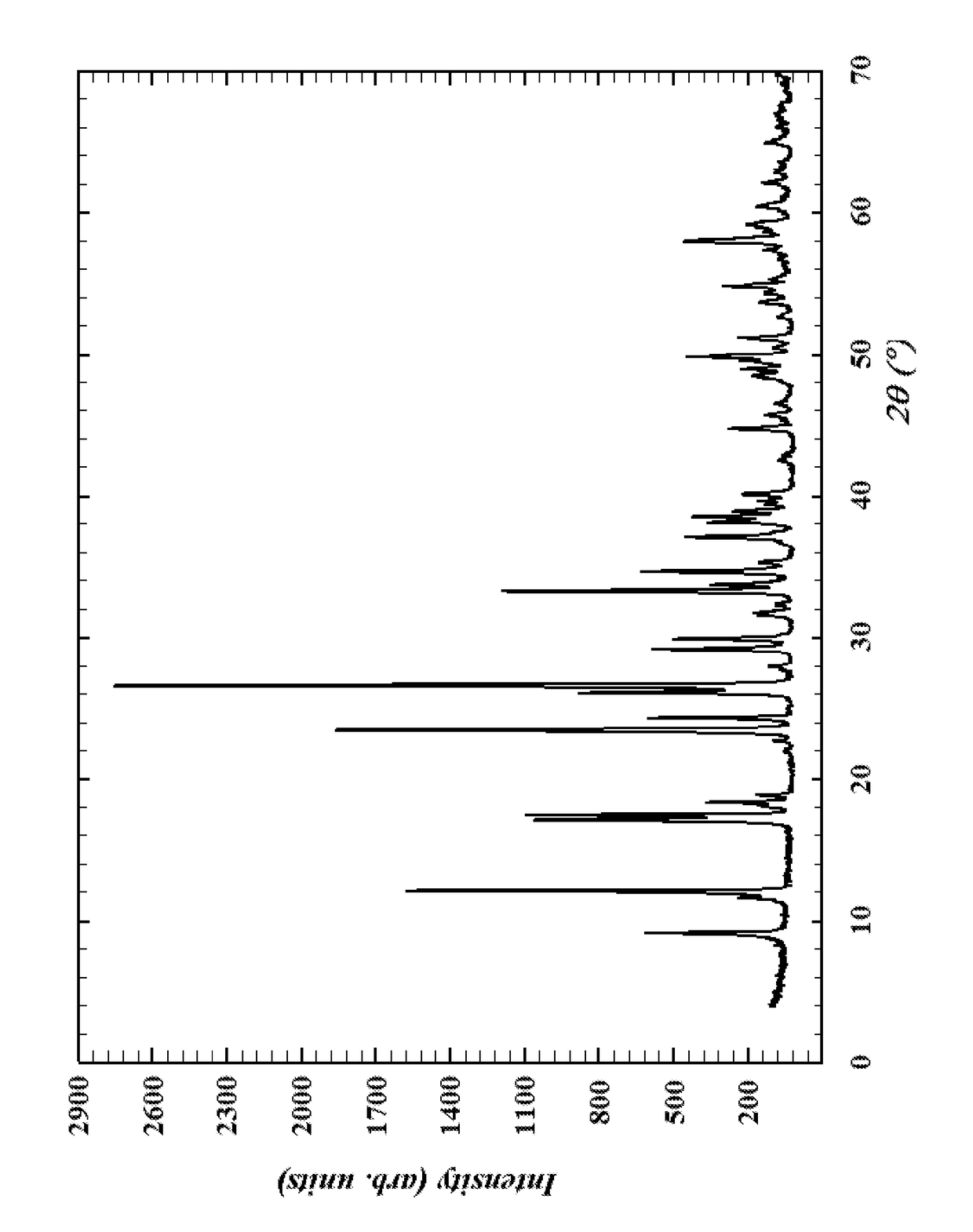Crystalline transition metal oxy-hydroxide molybdotungstate
a technology of transition metal and oxy-hydroxide, which is applied in the direction of catalyst activation/preparation, metal/metal-oxide/metal-hydroxide catalyst, physical/chemical process catalyst, etc., can solve the problems of accentuated refining problems and raised doubts about the quality of the structural assessment of materials
- Summary
- Abstract
- Description
- Claims
- Application Information
AI Technical Summary
Benefits of technology
Problems solved by technology
Method used
Image
Examples
example 1
[0030]In a 2 liter flask, 125.71 g of nickel nitrate hexahydrate (0.43 moles of Ni), 23.2 g of molybdenum trioxide (0.16 moles of Mo) and 77 g of ammonium metatungstate (0.31 moles of W) were dissolved in 1200 ml of water. The pH of the solution was increased to approximately 9 using concentrated NH4OH (approximately 300 ml). At this point the solution was transferred to a 2-liter stainless steel autoclave, the heat was ramped to 180° C. over a period of 2 hours and held at 180° C. for 24 hours, after which time the autoclave was cooled to room temperature, filtered, washed with 90 ml of about 90° C. water and then dried at 100° C. The x-ray powder diffraction spectra of the phase matches the spectra shown in the FIGURE.
example 2
[0031]In a 2 liter flask, 104.76 g of nickel nitrate hexahydrate (0.36 moles of Ni), 126.96 g of ammonium heptamolybdate (0.72 moles of Mo) and 53.28 g of ammonium metatungstate (0.21 moles of W) were dissolved in 1008 ml of water. The pH of the solution was increased to approximately 9 using concentrated NH4OH (approximately 100 ml). At this point the solution was transferred to a 2-liter stainless steel autoclave, the heat was ramped to 180° C. over a period of 2 hours and held at 180° C. for 24 hours, after which time the autoclave was cooled to room temperature, filtered, washed with 90 ml of about 90° C. water and then dried at 100° C. The x-ray powder diffraction spectra of the phase matches the spectra shown in the FIGURE.
example 3
[0032]In a 2 liter flask, 104.76 g of nickel nitrate hexahydrate (0.36 moles of Ni), 95.22 g of ammonium heptamolybdate (0.54 moles of Mo) and 53.28 g of ammonium metatungstate (0.21 moles of W) were dissolved in 1008 ml of water. The pH of the solution was increased to approximately 9 using concentrated NH4OH (approximately 100 ml). At this point the solution was transferred to a 2-liter stainless steel autoclave, the heat was ramped to 180° C. over a period of 2 hours and held at 150° C. for 7 days, after which time the autoclave was cooled to room temperature, filtered, washed with 90 ml of about 90° C. water and then dried at 100° C. The x-ray powder diffraction spectra of the phase matches the spectra shown in the FIGURE.
PUM
| Property | Measurement | Unit |
|---|---|---|
| temperature | aaaaa | aaaaa |
| pH | aaaaa | aaaaa |
| concentration | aaaaa | aaaaa |
Abstract
Description
Claims
Application Information
 Login to View More
Login to View More - R&D
- Intellectual Property
- Life Sciences
- Materials
- Tech Scout
- Unparalleled Data Quality
- Higher Quality Content
- 60% Fewer Hallucinations
Browse by: Latest US Patents, China's latest patents, Technical Efficacy Thesaurus, Application Domain, Technology Topic, Popular Technical Reports.
© 2025 PatSnap. All rights reserved.Legal|Privacy policy|Modern Slavery Act Transparency Statement|Sitemap|About US| Contact US: help@patsnap.com

